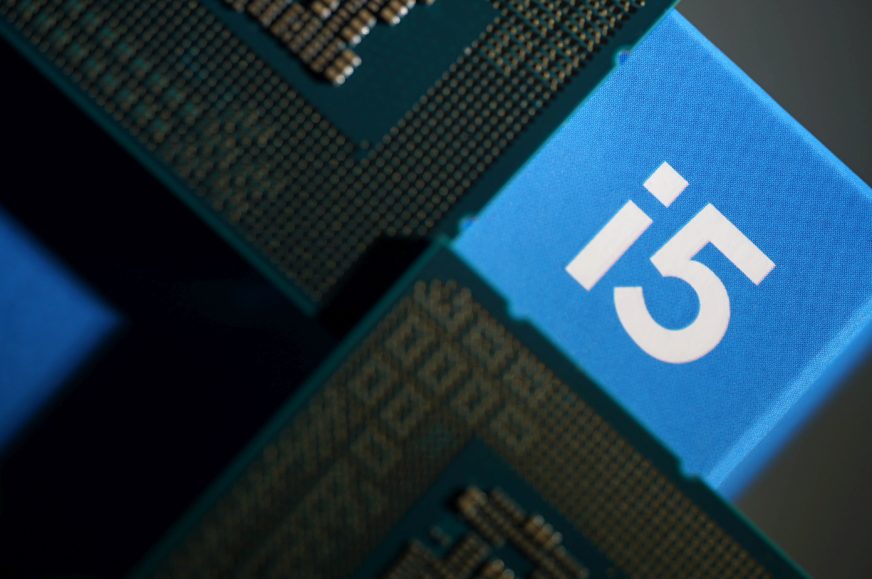Conclusion
We have a shocking revelation! And now, seriously. Different Core i5-12400 processor steppings differ not only in S-Spec code, but also in behavior in practice. Some of the expectations were confirmed, some were not. More importantly, you can choose the more suitable of the two options. But the best part is that everyone can evaluate the “better” variant differently. The differences across these processors must be negligible? No way…
Conclusion
The performance differences between the Core i5-12400 “H0” and “C0” are negligible, but clearly measurable nonetheless. But the results are somewhat against the theory we described in the introduction of the article. More powerful one, and it can be so titled at gains usually up to 1 %, is the stepping C0, the one with the larger core (and S-Spec code SRL4V). Why this behavior occurs we do not know, but we assure you that it is not a measurement error. All outputs are based on the passage of three repeated measurements, they are, of course, consistent and do not look for error in other settings of the power limits. These are unlimited in both cases.
Achieved all-core boost frequencies are about the same, the only significant difference is within the single-threaded boost. But even those 30 MHz to the detriment of H0 stepping are minor, and especially the level of core clock speeds for single-threaded tasks also depends on the quality characteristics of the particular unit. After testing several Core i5-12400 H0 (but also C0), an interval would surely emerge in which the best results with different values would occur. The all-core boost frequencies won’t diverge anymore, as they didn’t in our tests, there’s always a steady 3990 MHz for either processor variant.
More remarkable than the performance results are the power draw results. Stepping H0 (i.e. the one with the smaller, natively 6-core chip) is always more economical. Under “hard” load (3D rendering and x264 encoding) only marginally, by about 3 W (3 %), but at idle the saving (H0) is up to 42 %. Thus, at least the assumption that the variant with the smaller chip must be more economical off-load came out. And with less than 15 W it is. Oddly it’s even 2W below the Core i3-12100F, which might be a bit of an indication that inactive cores don’t increase efficiency and instead make it a bit worse, at least like this with no load.
The biggest surprise is around “gaming” power draw. Stepping H0 here is 8–23 % more economical compared to C0. And while this almost seems like nonsense, know that we’re not wrong about this either (the C0’s performance is also lower in tests on ithardwrae.pl). The test platform, including power limits, is of course identical. The lower idle power draw certainly accounts for some of the overall lower power draw. The formula the lower the load, the greater the difference in power draw, obviously does not apply to gaming. Towards the maximum load (represented by 3D rendering and x264 encoding), the difference in power draw is significantly lower than the ten watts of the idle Windows OS (or roughly five watts in single-threaded tasks), but in games it’s up to 16 W. Specifically in Shadow of the Tomb Raider. In the real-time strategy game Total War Saga: Troy, however, it’s already “only” 8 W to the detriment of the Core i5-12400 C0. This stepping has a slight performance edge, including games, but the drop in power draw is disproportionately higher. The efficiency of the Core i5-12400 H0 (S-Spec SRL5Y) is thus significantly higher for gaming PCs.
In January’s Core i5-12400 (C0) tests, we had little complaints about the efficiency, compared to the Ryzen 5600X it’s weaker. In computing workstations (although the Ci5-12400 isn’t headed for such builds) this statement remains valid regardless of stepping, but in gaming PCs the Core i5-12400 H0 already has the upper hand over AMD’s competing processor. While this may not be the case in all games (for example, in Total War Saga: Troy the Core i5-12400 H0 ties with the Ryzen 5 5600X), on average the more efficient of the Core i5-12400’s pair of processors performs better in this regard.
If you’re building a PC primarily for gaming and efficiency matters, insist on the Core i5-12400 variant with S-Spec code SRL5Y (stepping H0). It will probably be more difficult to negotiate this variant at larger vendors (“they won’t have time to deal with it”), but most smaller ones will hopefully be willing to accommodate such a request. The S-Spec code can be found in several places. In addition to registering in vendors’ systems, it is on the barcode label and also on the processor’s heat spreader, which is visible through a window on the side of the box. But even if you choose the trial-and-error method, there is a fairly high probability that you will hit it. According to our information, there are approximately the same number of processors in circulation from each stepping.
The biggest disadvantage of the Core i5-12400 H0 is worse cooling. This is the tax for a smaller chip from which heat dissipation is slower. In games and applications that make more intensive use of a single core, the difference can be six degrees Celsius even with a more powerful cooler. The supplied Intel Laminar RM1 cooler will thus be noisier on a Core i5 with a smaller chip. The right choice is therefore, as it happens, about priorities.
TL;DR: The biggest difference between the steppings (H0 and C0) of the Core i5-12400 is in power draw. Stepping C0 is significantly more power efficient both off-load and in games (up to 16W). Under hard load it’s only about three watts to the detriment of C0. But this (C0) variant with a larger chip will get less hot despite the higher power draw, and the supplied Intel Laminar RM1 cooler will be quieter for similar performance. Computing and gaming performance is virtually identical (with differences of around one percent), although the H0 variant always pulls the short end of the stick.
English translation and edit by Jozef Dudáš
- Contents
- Core i5-12400 SRL5Y and SRL4V
- Performance tests
- Memory and cache tests
- CPU power draw curve
- Average CPU power draw
- Achieved CPU clock speeds
- CPU temperatures
- Conclusion











All of this is meaningless if you don’t actually delid the cpus to prove your point.
Conclusion:
“More powerful one, and it can be so titled at gains usually up to 1 %, is the stepping C0, the one with the larger core (and S-Spec code SRL5Y).”
This must be an typo “SRL5Y”
—
MaGee
Thank you for this extensive test, really appreciate it.
H0 for me 🙂
—
MaGee
Yes (SRL4V is correct), thanks! Fixed. 🙂
Hi. I am little confused. Which one is better with temps? I have a 12400, s-spec SRL5Y. Is this the one with a larger or a shorter die? Thanks.
The variant with S-Spec code SRL5Y (stepping H0, as it is also referred to in the charts) has a smaller, natively 6-core chip and its cooling is a bit worse compared to stepping C0 (SRL4V). But again, you get better power draw at lower load and at idle. 🙂
Thanks for the answer. It is happening again with the 13400/F. It will use 2 different dies. A RPL one and an ADL one. Cheers.